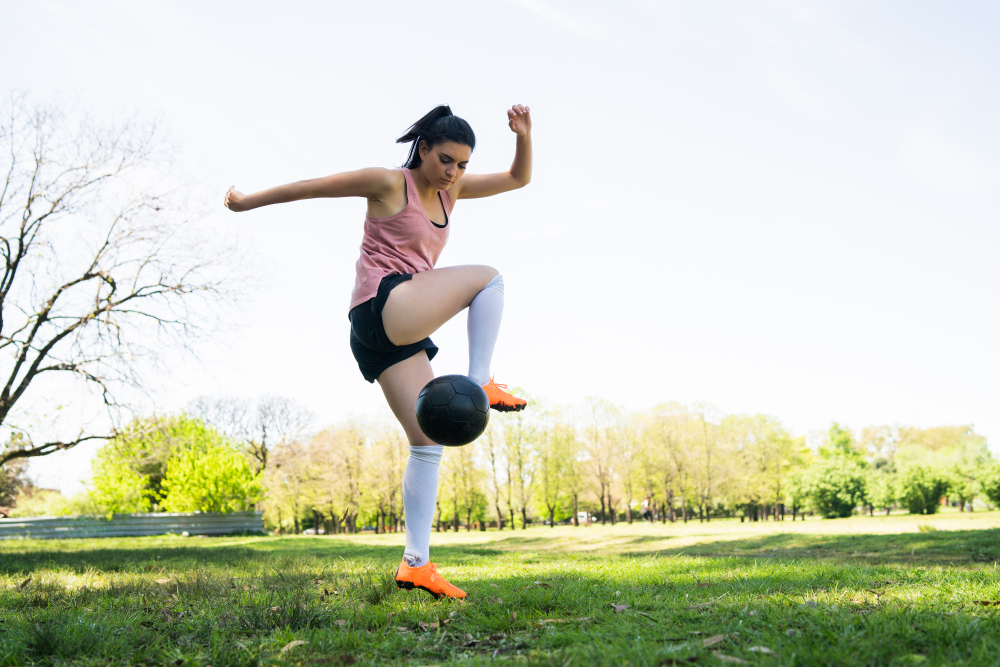Living an active and healthy lifestyle is a journey, not a destination. It’s about making small, consistent choices that contribute to your overall well-being. Whether you’re just starting or looking to enhance your current routine, these 20 sections will provide you with practical tips and insights to keep yourself active and healthy every day.

1. The Importance of Staying Active and Healthy
Benefits of an Active Lifestyle
Staying active and healthy is crucial for your physical and mental well-being. Regular exercise can help prevent chronic diseases, improve cardiovascular health, and boost your immune system. Mentally, it can reduce stress, anxiety, and depression, leading to a happier and more fulfilling life.
Long-Term Health Impacts
Adopting an active lifestyle has long-term health benefits. It can increase your lifespan, improve your quality of life, and enhance your overall vitality. Regular physical activity also helps maintain a healthy weight, supports bone health, and promotes better sleep.
2. Finding the Right Exercise Routine
Tailoring to Your Interests
Finding an exercise routine that you enjoy is key to staying active and healthy. Whether it’s dancing, hiking, swimming, or playing a sport, choose activities that excite you. This will make it easier to stay consistent and turn exercise into a habit.
Setting Realistic Goals
Set achievable fitness goals to keep yourself motivated. Start with small, manageable targets and gradually increase the intensity and duration of your workouts. This approach will help you build confidence and see progress over time.

3. Incorporating Strength Training
Benefits of Strength Training
Strength training is an essential component of staying active and healthy. It helps build muscle mass, strengthen bones, and improve metabolism. Incorporate exercises like weightlifting, resistance bands, or bodyweight workouts into your routine.
Creating a Balanced Routine
Ensure your exercise routine includes a balance of strength training, cardio, and flexibility exercises. This holistic approach will enhance your overall fitness, prevent injuries, and keep your workouts interesting.
4. The Role of Cardiovascular Exercise
Boosting Heart Health
Cardiovascular exercise is vital for maintaining a healthy heart. Activities like running, cycling, and brisk walking can improve cardiovascular endurance, lower blood pressure, and reduce the risk of heart disease.
Fun Cardio Activities
Make cardio fun by trying different activities. Join a dance class, play a sport, or go for a hike with friends. Mixing up your cardio workouts will keep them enjoyable and prevent boredom.
5. Embracing Flexibility and Mobility Exercises
Importance of Flexibility
Flexibility exercises, such as stretching and yoga, are crucial for maintaining a full range of motion in your joints. These activities can prevent injuries, improve posture, and reduce muscle tension.
Incorporating Yoga
Yoga is an excellent way to enhance flexibility and promote mental well-being. Incorporate a few yoga sessions into your weekly routine to reap the benefits of improved flexibility and stress reduction.
6. Staying Active Throughout the Day
Incorporating Movement Breaks
To keep yourself active and healthy, incorporate movement breaks into your day. Stand up, stretch, or take a short walk every hour to reduce the negative effects of prolonged sitting.
Active Commuting
Consider active commuting options like walking or biking to work. This not only adds more physical activity to your day but also reduces your carbon footprint and can be a great way to start and end your workday.
7. Healthy Eating Habits
Balanced Diet
A balanced diet is essential for staying active and healthy. Focus on eating a variety of whole foods, including fruits, vegetables, lean proteins, whole grains, and healthy fats. Avoid processed foods and sugary drinks.
Meal Planning and Preparation
Plan and prepare your meals ahead of time to ensure you have healthy options available. Meal prepping can save you time and help you avoid unhealthy food choices during busy days.
8. Staying Hydrated
Importance of Hydration
Staying hydrated is crucial for overall health and well-being. Water supports various bodily functions, including digestion, temperature regulation, and joint lubrication. Aim to drink at least 8 glasses of water a day.
Hydration Tips
Carry a reusable water bottle with you to stay hydrated throughout the day. Infuse your water with fruits or herbs for added flavor and health benefits.
9. Getting Enough Sleep
Role of Sleep in Health
Adequate sleep is essential for maintaining an active and healthy lifestyle. It allows your body to recover, repair, and rejuvenate. Aim for 7-9 hours of quality sleep each night.
Improving Sleep Quality
Create a relaxing bedtime routine, limit screen time before bed, and ensure your sleeping environment is comfortable and conducive to rest. These practices can help improve your sleep quality.
10. Managing Stress
Impact of Stress on Health
Chronic stress can have detrimental effects on your health. It can lead to weight gain, weaken your immune system, and increase the risk of chronic diseases. Managing stress is crucial for staying active and healthy.
Stress-Reduction Techniques
Incorporate stress-reduction techniques like meditation, deep breathing exercises, and mindfulness into your daily routine. These practices can help you stay calm and focused.
11. Building a Support System
Importance of Social Support
Having a support system is essential for maintaining an active and healthy lifestyle. Surround yourself with positive influences, such as friends, family, or fitness groups, who encourage and motivate you.
Joining Fitness Communities
Join local fitness communities or online groups to connect with like-minded individuals. Sharing your fitness journey with others can provide accountability, support, and inspiration.
12. Setting and Achieving Goals
SMART Goals
Set SMART goals (Specific, Measurable, Achievable, Relevant, Time-bound) to stay on track with your health and fitness objectives. This structured approach can help you achieve your goals more effectively.
Celebrating Milestones
Celebrate your milestones and achievements along the way. Rewarding yourself for reaching your goals can boost your motivation and encourage you to keep pushing forward.
13. Incorporating Rest and Recovery
Importance of Recovery
Rest and recovery are vital components of staying active and healthy. Give your body time to repair and strengthen after workouts. This can prevent injuries and improve overall performance.
Active Recovery Techniques
Incorporate active recovery techniques like light stretching, foam rolling, and gentle yoga into your routine. These activities can help reduce muscle soreness and improve flexibility.
14. Exploring Outdoor Activities
Benefits of Outdoor Exercise
Exercising outdoors can boost your mood, reduce stress, and provide a refreshing change of scenery. Activities like hiking, biking, and running in nature can enhance your physical and mental well-being.
Seasonal Activities
Explore seasonal activities to keep your routine exciting. In the summer, try swimming or kayaking, and in the winter, go skiing or snowshoeing. These activities can provide a fun and varied workout.
15. Incorporating Mindfulness Practices
Benefits of Mindfulness
Mindfulness practices can improve your mental health, reduce stress, and enhance your overall well-being. Incorporate mindfulness techniques like meditation and deep breathing into your daily routine.
Practicing Gratitude
Practice gratitude by reflecting on the positive aspects of your life. This can shift your focus from negative thoughts and help you appreciate the present moment, contributing to a healthier mindset.
16. Staying Motivated
Finding Your Why
Identify your personal reasons for wanting to stay active and healthy. Whether it’s to feel better, have more energy, or set a positive example for your family, knowing your “why” can keep you motivated.
Mixing Up Your Routine
Keep your fitness routine interesting by trying new activities or varying your workouts. This can prevent boredom and keep you excited about staying active.
17. Overcoming Barriers to Exercise
Common Obstacles
Identify common obstacles that might prevent you from exercising, such as time constraints, lack of motivation, or limited access to facilities. Finding solutions to these challenges can help you stay on track.
Creating a Plan
Create a plan to overcome these obstacles. For example, if time is an issue, try shorter, high-intensity workouts. If motivation is lacking, find a workout buddy or join a fitness class to stay accountable.
18. Incorporating Technology
Fitness Apps
Use fitness apps to track your progress, find new workouts, and stay motivated. Many apps offer personalized workout plans, nutritional advice, and community support to help you reach your goals.
Wearable Technology
Wearable technology, such as fitness trackers and smartwatches, can provide valuable insights into your activity levels, heart rate, and sleep patterns. Use this data to make informed decisions about your health and fitness.
19. Prioritizing Mental Health
Mental Health and Physical Activity
Physical activity is closely linked to mental health. Regular exercise can reduce symptoms of anxiety and depression, improve mood, and enhance cognitive function. Prioritizing both mental and physical health is essential for overall well-being.
Seeking Professional Help
If you’re struggling with mental health issues, seek professional help. Therapists, counselors, and support groups can provide valuable resources and support to help you navigate challenges and maintain a healthy lifestyle.
20. Making Health a Lifestyle
Long-Term Commitment
Staying active and healthy is a lifelong commitment. Focus on making sustainable changes that you can maintain over time. This approach will help you build lasting habits and achieve long-term health benefits.
Continuous Learning
Stay informed about health and fitness trends, research, and best practices. Continuous learning can help you make informed decisions and adapt your routine to suit your evolving needs.
FAQs
- What are the benefits of staying active and healthy? Staying active and healthy improves physical fitness, mental well-being, and reduces the risk of chronic diseases.
- How can I find an exercise routine that suits me? Choose activities you enjoy, set realistic goals, and vary your workouts to keep them interesting and manageable.
- What types of exercises should I include in my routine? Include a mix of strength training, cardio, and flexibility exercises for a balanced and effective workout routine.
- How often should I exercise to stay active and healthy? Aim for at least 150 minutes of moderate aerobic activity or 75 minutes of vigorous activity per week, plus strength training twice a week.
- What are some tips for staying hydrated? Drink at least 8 glasses of water daily, carry a water bottle, and infuse water with fruits or herbs for added flavor.
- How can I improve my sleep quality? Create a relaxing bedtime routine, limit screen time before bed, and ensure your sleeping environment is comfortable.
- What are some effective stress-reduction techniques? Practice meditation, deep breathing exercises, mindfulness, and physical activity to manage and reduce stress.
- How can I stay motivated to maintain a healthy lifestyle? Identify your personal reasons for staying active, set achievable goals, and mix up your routine to keep it exciting.
- What should I do if I encounter obstacles to exercise? Identify common obstacles, create a plan to overcome them, and seek support from friends, family, or fitness communities.
- Why is mental health important for overall well-being? Mental health is closely linked to physical health. Regular exercise can improve mood, reduce anxiety and depression, and enhance cognitive function.





